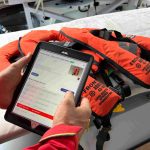Vessel management software is becoming increasingly popular in Australia, thanks to its ability to streamline operations and improve efficiency in the marine industry. However, implementing this software can be a daunting task, especially for those without any prior experience. In this post, we’ll provide a step-by-step guide on how to successfully implement vessel management software. We’ll also share best practices, training and support tips, and success stories to help you make the most out of this powerful software.
Step 1: Define Your Objectives
Before implementing vessel management software, it’s important to define your objectives. What are your key business goals? What problems are you trying to solve? What metrics will you use to measure success? Answering these questions will help you determine which features of the software are most important and how you can customise it to meet your specific needs.
Step 2: Choose the Right Software
Choosing the right vessel management software is crucial to the success of your implementation. Consider factors such as ease of use, scalability, integrations with other tools, and cost. You’ll also want to look for a vendor that provides comprehensive training and support to ensure a smooth implementation process.
Step 3: Plan Your Implementation
Once you’ve selected your software, it’s time to plan your implementation. Create a detailed project plan that outlines key milestones, deadlines, and responsibilities. Make sure to involve key stakeholders in the planning process to ensure everyone is on the same page.
Step 4: Train Your Team
Training is essential to a successful implementation. Ensure your team has access to comprehensive training materials and resources, including online tutorials, user manuals, and webinars. Consider providing hands-on training sessions to help your team get up to speed quickly.
Step 5: Monitor Progress
During the implementation process, it’s important to monitor progress and make adjustments as needed. Track key metrics such as user adoption rates, system uptime, and user satisfaction. This will help you identify any potential roadblocks or areas for improvement.
Best Practices for Successful Implementation:
1. Start small: Begin by implementing the most critical features and gradually add more as needed.
2. Communicate clearly: Keep all stakeholders informed of the implementation process and provide regular updates.
3. Engage your team: Involve your team in the implementation process to ensure buy-in and adoption.
4. Test thoroughly: Test the software thoroughly before going live to minimise the risk of errors or downtime.
Training and Support:
Comprehensive training and support are critical to a successful implementation. Look for a vendor that provides the following resources:
1. Online tutorials: These provide step-by-step instructions on how to use the software.
2. User manuals: A detailed user manual provides a comprehensive reference for all aspects of the software.
3. Webinars: Live webinars provide an interactive learning experience and allow users to ask questions in real-time.
4. Customer support: Look for a vendor that offers 24/7 customer support to ensure prompt resolution of any issues that may arise.
Success Stories:
Vessel management software has been successfully implemented by many organisations in Australia. Here are a few examples:
1. A commercial shipping company was able to streamline their operations and improve efficiency by implementing vessel management software. The software allowed them to track their vessels in real-time, manage crew schedules, and monitor fuel consumption.
2. A marine survey company used vessel management software to improve their data management and reporting capabilities. The software allowed them to automate their survey process and generate custom reports quickly and easily.
3. A port authority was able to reduce costs and increase efficiency by implementing vessel management software. The software allowed them to automate many of their manual processes, such as billing and invoicing, resulting in significant time savings.
So Why Sea-Flux?
Vessel management software can be a powerful tool for improving efficiency and streamlining operations in the marine industry. By following our step-by-step guide, implementing best practices, providing training and support, and learning from success stories, you can ensure a successful implementation process. Choosing the right software vendor is also crucial, and we believe that Sea Flux is the right choice for your organisation. Our software is user-friendly, scalable, and provides comprehensive training and support to ensure a smooth implementation process. Don’t wait any longer, schedule a demo today to see how Sea Flux can help your organisation achieve its goals and streamline your marine operations.
If you’re looking for a vendor that provides comprehensive training and support, look no further than Sea Flux. Our software is easy to use, scalable, and integrates with other tools seamlessly. Our team of experts is available 24/7 to provide support and ensure a smooth implementation process. Don’t wait any longer, schedule a demo today to see how Sea Flux can help your organisation achieve its goals and streamline your marine operations.










